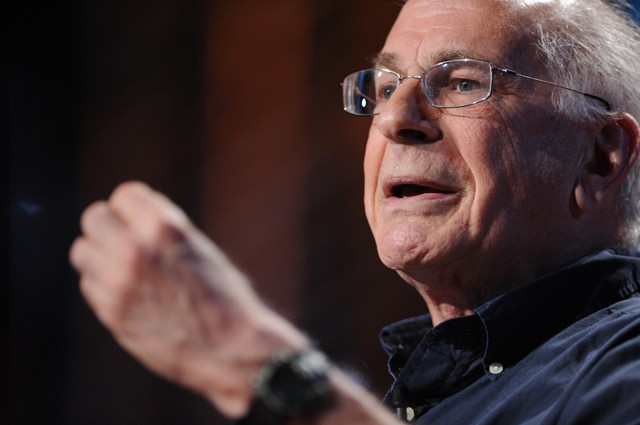Publiscize: Instant Outreach in the First Person
 Before he founded Publiscize – “Want science directly from the source? We do too “ – in June, Robert B. Seigel used to get frustrated. As a young researcher, he’d get the impression people were tuning out as he described his science.
Before he founded Publiscize – “Want science directly from the source? We do too “ – in June, Robert B. Seigel used to get frustrated. As a young researcher, he’d get the impression people were tuning out as he described his science.
And it wasn’t just his work – other scientists he talked to described the same feeling.
The situation was doubly frustrating because he knew scientists’ work needed to be more in the public sphere, not less. If they started to feel they were being bores or pedants, the result would be less science out there, not more: “There is too great of a disconnect between science and the rest of the world.”
Around the time Seigel received his Ph.D. in atmospheric science, the frustration reached a point where he started a postdoc organization at the University of Miami called PDOCS, which stands for the Postdoctoral Development of Career Skills. This group included not just his fellow physical scientists but other researchers around the university. One feature baked into the group was a lighting round at the beginning of every meeting—five-minute talks in which participant had to describe their own research. All the attendees made for an educated audience, but since many different disciplines were on hand these elevator pitches had to be free of discipline-limiting jargon and in-crowd shortcuts.
“This sparked great discussion,” Seigel recounted, “and the presenters learned a lot when the actually had to talk about their research. I saw this and realized this could happen not only for the benefit of science but also for the benefit of society.”
The public often doesn’t ‘get’ science, but scientists can be their own enemy in getting their work across. “The more research I did the more I realized how passionate I was about this topic, and eventually Publiscize happened.”
This happening is a website, Publiscize, where researchers of any stripe – medical, physical, social – can present short articles in layman’s terms about their peer-reviewed and published projects. Results range from pieces like “Jupiter’s moon, Io, cycles sulfur in its crust like water on Earth,” to “How to turn online browsers into buyers.”
Publiscize authors must have link to a peer-reviewed publication, a title for their post, a 300-character summary, a main article suggested at 500 words or less. An image or video is encouraged, and writers can cite co-authors and funding agencies.
The effort officially launched in the middle of June with what Seigel said is the “polished minimum viable product.”
Right now he’s trying to figure out now if the product is indeed viable: does the public want to read articles that normally don’t receive publicity, and are scientists willing to summarize their work for that (possibly apathetic) public. “I’ve already started to see,” he said, “that these hypotheses are becoming valid.”
Among the tabs across the top of the Publiscize website such as “Technology & Math” and “Chemistry & Materials” is “People & Society”, and Seigel made a special plea for the readers of Social Science Space: “I would really like more social science up there.
“Any research that happens in an academic institution should be on Publiscize to make it widely known,” he explained. “That is basically my mentality.”
In fact, he wonders if social science might have a leg up on some of the more technical disciplines once the Publiscize version of research leads readers to the scientific paper at it root. “I want to make [each Publiscize posting] literally a gateway article, and this is especially important for social scientists, because I think to read a social science [journal] article might be easier for the public than, say, an article on mathematics.”

Here’s the link back to origoinal article, in this case from Casey Klofstad, a Harvard trained political scientist.
Two aspects of what it takes to be posted on Publiscize are immutable, and bear repeating – the author must be a scientist (Seigel vets everyone), and they must be reporting on research that has appeared in a peer-reviewed publication. While he acknowledges that this leaves out interesting but unpublished science, his reasoning is based on the role he’s cut out for Publiscize: “I do not want to serve as a journal. I want to serve as a gateway between journals and the public.”
Where there are gateways, there may also be gatekeepers … such as scientists themselves. Besides arguing that the public will find their research boring, many scientists say they just can’t cram one more thing into their schedule
“Scientists are saying I don’t have time for this. But really they do have time for this – it’s just a matter of showing them the value.” Seigel paused. “That’s going to be an uphill battle.” One of his weapons of choice will be the mandated science outreach in many grants. There’s also the less-tangible benefit to scientists of finally being confronted with making their work understandable to the public – and oftentimes themselves.
“I’d say about 50 percent of the scientists have sent an email later thanking me and explaining how Publiscize helped them understand their research better,” Seigel said. “I’ve even had one scientist say that as was in the process of writing a proposal, writing up a synopsis of his research for Publiscize changed the way that he wrote the proposal. He went back and edited the proposal and refocused it to put things into the bigger picture.” (By the way, on Publiscize that sysnopsis is called a “scinopsis.”)
And don’t pass this off as an exercise in dumbing down your research. “Dumbing down? I think that’s not correct at all,” Seigel said, clearly having heard this one before. “Just because you write in terms that everyone can understand, I don’t consider that dumbing down. If anything, it’s harder to do that.”
He does offer help to smarten up your post once you’ve started the process, both with writing tips on the site and in the editing he offers before the post goes live. “It’s working. The first versions of the synopsis I get are not too bad,” Seigel said, estimating that about 75 percent come in close to jargon free, but need some changes structurally. (Perhaps you’ve heard of that ‘inverted pyramid’ we journalists use, where we start the article with the results!)
As the number of submissions increase, Seigel would like to create tools so that universities and research institutions do the editing, and not Seigel. “I don’t want to be a communications office – I want to a be tool to help communications office.”
Which raises the question isn’t this all already being done in, say, the university press office or perhaps on EurekaAlert?
He sees as inefficient the current communications office-led process of getting a scientist’s research into the public sphere. He’d like to empower scientists to have a greater role in getting their press releases (or equivalents) under way, and then give the institutions the tools to better manage this blossoming of public-facing information. He noted that only 1 percent of all science ever gets communicated to the public—“that’s frustratingly low”—and he hopes the software tools for internal communication and content management associated with Publiscize will amplify that figure.
In an age when the university press release, written more as a feature story and less as an invitation for further coverage, can be the only account of some science, or when a major news outlet’s take on the research may also be the only original reporting, the ramifications of the 1 percent problem gnaws at Seigel.
His research finds that 2,000 articles a day come out in scientific journals just in the U.S., and even press-release distribution services like EurekaAlert! (which focuses on providing material to journalists, not the public) at best list 50 new pieces of content a day. That’s a lot of work going unremarked.
“Everyone keeps talking about the same story, and then it goes viral, and it’s all because everyone’s pouncing on this one percent,” he lamented. “[Media sites] do it in different ways, and what that does is that it oftentimes confuses the public because they see many different spins on the same piece without actually digging deeper and contacting the scientist. So really what I want Publiscize to be,” he concluded, “is additional information.” (He acknowledged having press releases as content currently, but eventually wants all content to flow directly from the researcher.)
Now Seigel’s challenge is to bring Publiscize to the next level. So far Publiscize has been his doing alone, in his spare time with funding from family and friends. Now it’s moving to his center stage, along with a move to Denver where he’ll seek out like-minded developers and entrepreneurs. That next level is in large part to develop software that he can then sell to research institutions to amplify the way that research institutions get their information out to the public.
































































































